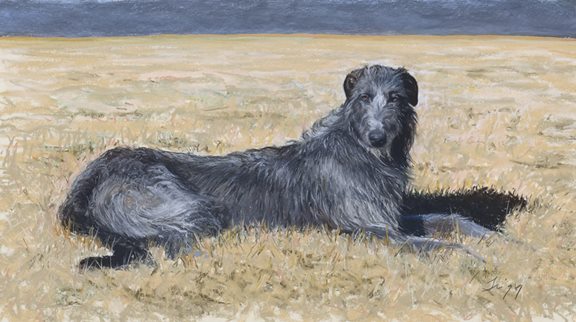
Spectators new to the world of dog shows sometimes (and erroneously) assume that dogs in the show ring are being judged against each other. They’re not. Each dog is being evaluated against the standard for its breed which the judge has memorized in his or her head. Other factors, such as attitude, can factor into a judge’s decisions, but by and large, the dog that best meets its standard in the opinion of the judge wins the day.We’ve been sharing some of the aspects of dog structure that factor into a judge’s evaluation but we’ve not touched upon ribs.
Dog have nine pairs of ribs, and the ones connected to the breast bone are called “true ribs.” There are also three pairs of ribs that are connected by cartilage, and the last ones are called a “false ribs” that hinge onto the bottom of the ninth rib, and are therefore not directly connected with the sternum. The final set are ribs that are unattached, and for that reason, they’re called “floating ribs.” Ribs covered in Texas barbecue sauce are called yummy. Just checking to see if you’re paying attention.
When a judge runs their hands over a dog’s ribs, they’re checking for rib “spring,” or how much curvature there is in the ribs. This indicates how much space there is for the dog’s heart and lungs, an important quality in a working dog. A dog that is “slab sided” has ribs with little curvature, little to no arch or roundness, and little spring from the spinal column. Flat ribs, however, are not always slab-sided which is the state of being narrow throughout. The slab-sided ribs are flat throughout beginning at the articulation from the vertebras continuing downwards. Slab-sidedness and flat ribs are atypical for almost all breeds, but are especially a serious fault in endurance hunting dogs such as Beagles, Foxhounds, Deerhounds and Wolfhounds.
That leads to the importance of knowing one’s standard because a dog’s breed impacts what’s regarded as correct for the breed. The shape of a chest, for example, is important to an earth dog breed that impacts how the dog enters and moves around under ground in a tunnel. The Bulldog’s standard calls for well-rounded and very deep ribs, and this is often called for in stocky ‘Bully’ breeds, as well. In a different post, we’ll talk about “length of ribs.”
“Moor Lord” by Rosalind Trigg
http://www.nobledogs.com/
